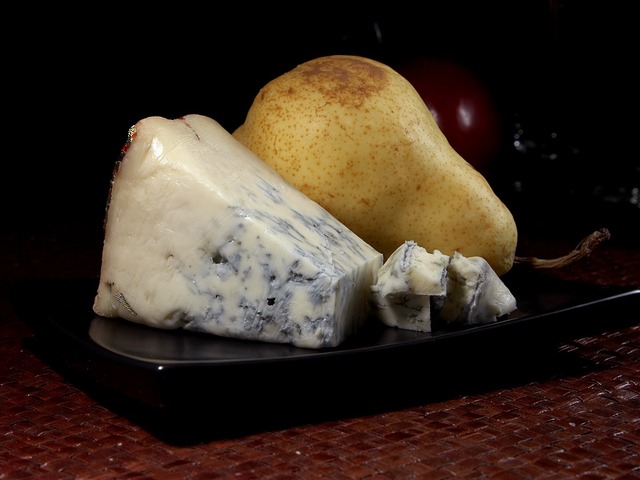Bleu (or blue) cheese and Gorgonzola – they’re quite similar. Gorgonzola is in fact a type of bleu cheese.
Let’s find out the difference between the two.
- Blue cheese: a rich cheese in which the internal mold manifests itself in blue veins: made in France especially from sheep’s milk and elsewhere also from cow’s milk and goat’s milk.
- Gorgonzola: a strongly flavored, semisoft variety of Italian milk cheese veined with mold.
As we can see, both cheeses consist of veins of mold. Appetizing, no?
Bleu cheese:
- Includes a large class of cheeses treated with molds.
- Was reportedly discovered by accident by a drunken cheesemaker.
- Is made from cow’s, sheep’s, or goat’s milk and Penicillium glaucum mold.
- Has blue to green to gray coloring of mold throughout the white.
- Is aged for several months in a temperature-controlled environment, like a cave.
- Has a stronger flavor than Gorgonzola.
- Is it a bit more crumbly than Gorgonzola.
Gorgonzola cheese:
- Was originally produced in Gorgonzola, Italy.
- Is usually made from cow’s milk (can be made from goat’s) and Penicillium glaucum mold.
- Has blue-green coloring of mold throughout the white.
- Is aged for three to four months.
- Has a milder flavor than bleu.
- Is a bit softer than bleu.
The Food Substitutions Bible lists feta as a substitute for bleu cheese, noting that the flavor is not nearly as strong.
The Bible points out Gorgonzola, although typically mild, does have some more pungent, longer-aged varieties. Possible substitutions include Roquefort (less creamy), Stilton (less creamy), Dolcecatte (young Gorgonzola; milder), Cambozola (less complex flavor), and Saga (less complex flavor).
Oddly, our two featured cheeses are not named as possible substitutions for each other.
To recap: Bleu cheese includes many different types of cheeses, including Gorgonzola; both are aged cheeses made with mold.
Bleu cheese can be made from cow’s, sheep’s, or goat’s milk; has a sharper bite; and is more hard and crumbly. Gorgonzola is made primarily from cow’s milk, is milder in taste, and softer in texture.

Comments
3 responses to “Difference between: bleu cheese and Gorgonzola”
Thanks for this. I love Gorgonzola and blue cheese, but hadn’t known what the differences were. Thanks for including info about similar cheeses as well. Sharing.
P.S. Sharing buttons that make it easy to share would be awfully nice.
Thanks Kathryn – it’s on my list of things to incorporate in the website. 🙂